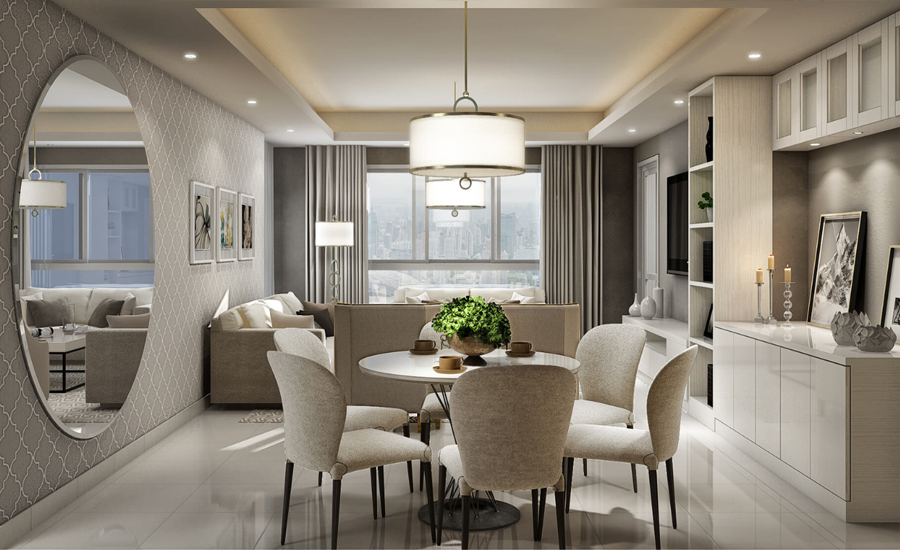
Interior Design: Crafting Spaces with Purpose and Style
Interior design is the art and science of enhancing the interior spaces of a building to create functional, aesthetically pleasing environments that meet the needs and tastes of the occupants. A well-designed interior goes beyond decoration—it balances form, function, and comfort, making spaces more enjoyable and efficient.
What Is Interior Design?
Interior design involves planning, designing, and executing the layout and decoration of indoor spaces. It includes:
Space Planning: Optimizing layouts for better functionality and flow.
Aesthetic Harmony: Choosing colors, textures, and furnishings that create a cohesive look.
Customization: Tailoring designs to suit the unique preferences and requirements of individuals or businesses.
Integration: Incorporating architectural features, lighting, and furniture seamlessly into the design.
Scope of Interior Design
1. Residential Interior Design
Focused on creating comfortable and personalized living spaces, including homes, apartments, and vacation properties.
2. Commercial Interior Design
Designed to optimize business environments such as offices, retail stores, restaurants, and hotels, enhancing productivity and customer experience.
3. Industrial Interior Design
Aimed at functional spaces like warehouses and factories, ensuring practicality and safety while incorporating aesthetic elements.
4. Public Spaces
Includes designing libraries, museums, hospitals, and schools to make them inviting, efficient, and accessible.
Key Elements of Interior Design
1. Space Planning
Maximizing the use of available space.
Creating layouts that promote functionality and ease of movement.
2. Color Schemes
Selecting colors that influence mood and complement the design theme.
Using tones and contrasts to create depth and interest.
3. Furniture and Decor
Choosing furniture that matches the style, scale, and purpose of the space.
Adding decorative elements like artwork, rugs, and plants to enhance the aesthetic appeal.
4. Lighting Design
Combining natural and artificial lighting for optimal illumination.
Using lighting fixtures to create ambiance and highlight features.
5. Materials and Finishes
Selecting durable and stylish materials for flooring, walls, and ceilings.
Incorporating textures and patterns for visual interest.
6. Functionality and Ergonomics
Designing spaces that are comfortable and user-friendly.
Ensuring easy access and efficient layouts, especially in workplaces.
Process of Interior Design
1. Consultation
Understanding the client’s vision, needs, and budget.
Analyzing the space to identify opportunities and constraints.
2. Concept Development
Creating design concepts, mood boards, and layouts for approval.
Proposing color palettes, furniture styles, and material options.
3. Design Execution
Procuring furniture, fixtures, and materials.
Overseeing the installation of design elements, including lighting, flooring, and decor.
4. Final Touches
Adding accessories, artwork, and decorative items to complete the look.
Conducting a walkthrough to ensure client satisfaction.
Benefits of Interior Design
1. Enhanced Aesthetics
A professionally designed interior creates visually stunning spaces that reflect the client's personality or brand.
2. Improved Functionality
Efficient layouts and well-thought-out designs optimize the use of space, enhancing comfort and usability.
3. Increased Property Value
Well-designed interiors can significantly boost the market value of a property.
4. Emotional Impact
Thoughtful designs can evoke positive emotions, creating spaces that feel welcoming, inspiring, or relaxing.
5. Energy Efficiency
Sustainable designs incorporating natural light, energy-efficient fixtures, and eco-friendly materials reduce costs and environmental impact.
Popular Interior Design Styles
1. Modern: Sleek, minimalist designs with clean lines and neutral colors.
2. Contemporary: A mix of current trends with an emphasis on comfort and simplicity.
3. Traditional: Classic designs featuring rich colors, ornate furniture, and timeless elegance.
4. Industrial: Raw, unfinished aesthetics with exposed materials like brick and metal.
5. Scandinavian: Light, airy designs that focus on functionality and natural elements.
6. Bohemian: Eclectic, vibrant styles with layered textures and bold patterns.
Challenges in Interior Design
1. Budget Constraints: Balancing the client’s desires with financial limitations.
2. Space Limitations: Designing functional spaces in small or irregularly shaped areas.
3. Balancing Style and Function: Creating designs that are both beautiful and practical.
4. Adapting to Trends: Ensuring the design remains timeless while incorporating contemporary trends.
The Role of Professionals in Interior Design
Interior designers combine creativity with technical expertise to transform spaces. Their responsibilities include:
Conducting in-depth consultations to understand the client’s vision.
Offering innovative solutions to maximize space and enhance usability.
Managing projects from concept to completion, ensuring quality and timeliness.

